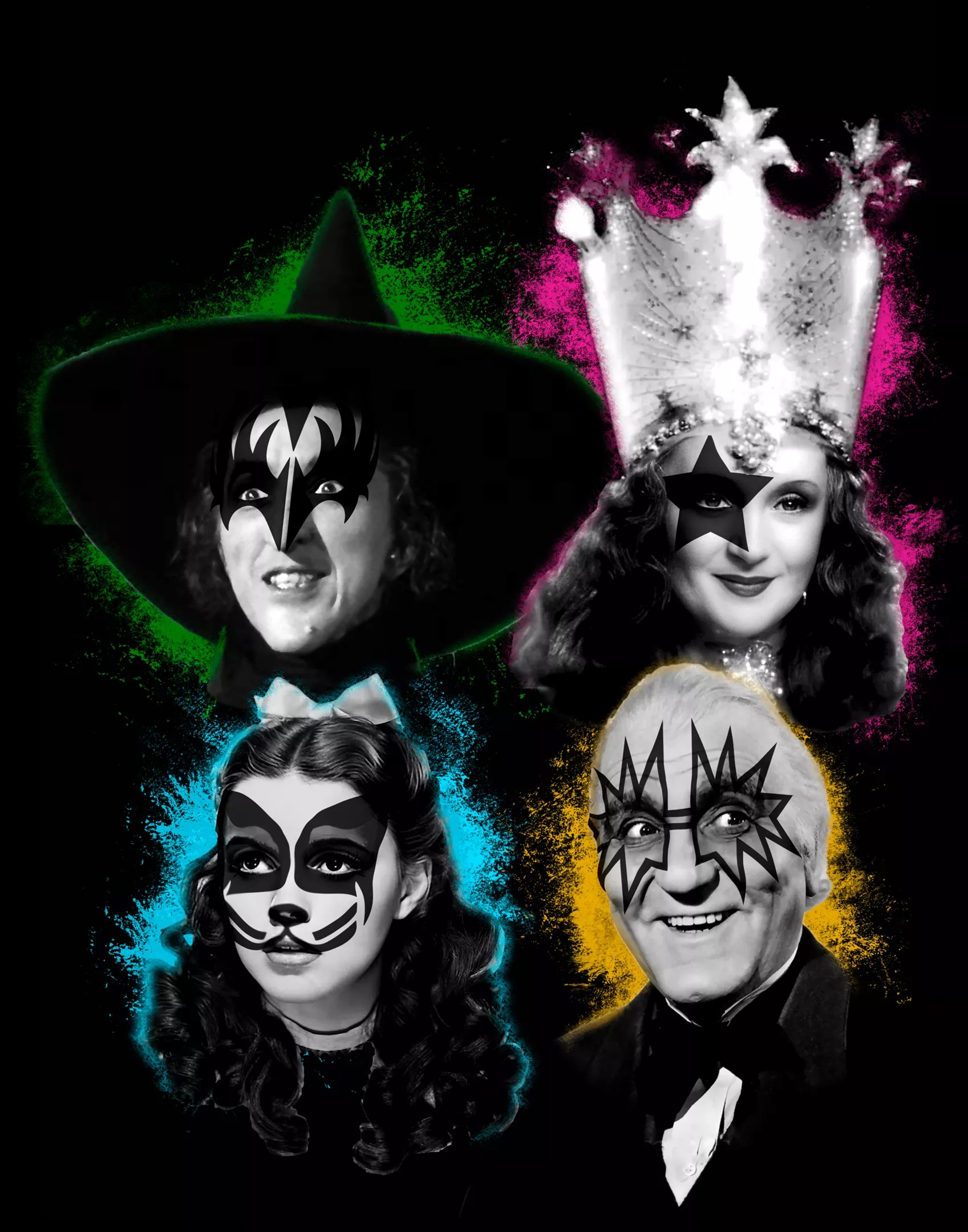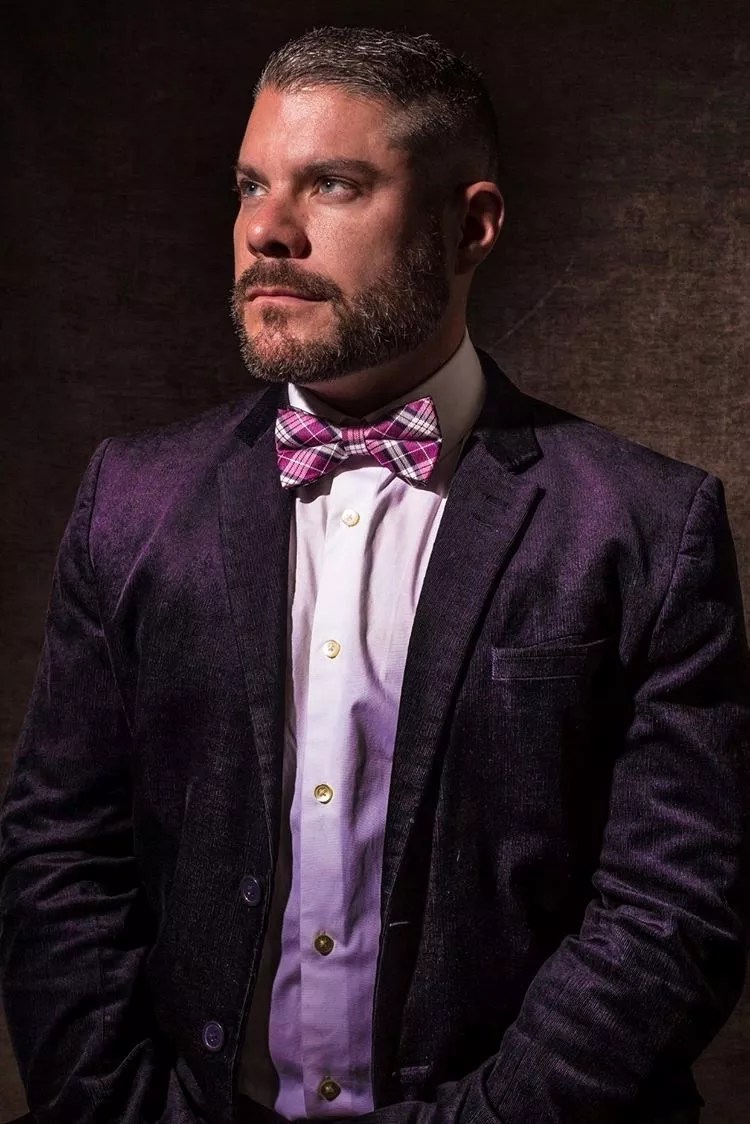
Brian Heim

Audio By Carbonatix
University of Colorado Denver film professor Andy Scahill has a lot to say about the 1939 movie classic The Wizard of Oz. “I teach a whole class on it,” says Scahill. “Italy’s University of Turin did a study about what the most-often-quoted film in history is, and it turns out it’s The Wizard of Oz. So if this is such a valuable and influential text within film history, it’s only right that we pay it special attention.”
Which is only one of the many reasons that Scahill’s Rainbow Cult film series is choosing the movie for its next public screening event, at Meow Wolf on Tuesday, January 28. The event includes not only a showing of The Wizard of Oz, but interactive performances from Zarah Misdemeanor, America Jackson and Indy Fire; one dollar from every ticket sold will benefit the Delores Project, which works with women and transgender and nonbinary individuals experiencing homelessness.
The importance of The Wizard of Oz as a story, and not just a film, goes all the way back to L. Frank Baum’s novel, which this year celebrates its 125th publication anniversary. “The original novel is really about responding to fascism,” Scahill says. “It’s a young and unhoused immigrant who travels to a new country and joins forces with a farmer and a steelworker and ends up going to Washington, D.C., to demand things of a representative democracy.”
Lost in translation from original book to beloved movie was the nature of the Wizard himself – who was far from the avuncular and harmless old fraud portrayed by Frank Morgan in the film. “People forget that in the novel, the Emerald City wasn’t made of emerald at all,” Scahill says. “The Wizard makes people wear green-tinted glasses when they enter. He’s just a propagandist. He also shows a different face to everyone with whom he comes into contact. It’s all a deliberate deconstruction of the fascist state and its leadership, the power of mass media and misinformation.

CU Denver film professor Andy Scahill.
Rainbow Cult
“The whole point for Baum was – and he was writing for young women especially here – that all your life, you’re going to have someone telling you that you don’t have enough courage, you don’t have enough intelligence,” he says. “But you do have those things. Don’t let anyone tell you any different, no matter who they might be.”
Scahill goes on to point out that the 1939 movie adaptation is a perversion of Baum’s intended ideology. “The film is changed to really be more about the movies themselves,” Scahill explains. “The Wizard becomes an analog for Louis B. Mayer [co-founder of MGM Studios, and arguably the most powerful executive in motion pictures at the time] – even kind of looks like him. Which is why the film lets him off the hook instead of allowing him to be the villain. The movie is essentially Hollywood boasting about its own power: We are the Dream Factory, it’s saying. Look at the amazing things we can create, even if they’re artificial. Isn’t that better than reality? So go back to your shitty Kansas life and, in fact, repudiate any desire for something more.”
As evidence of this last claim – that Dorothy is made in the movie to surrender the agency she’s just achieved – Scahill points to a single line at the end of the film: “If I ever go looking for my heart’s desire again,” he quotes, “I won’t look any further than my own backyard.”
“What a garbage ideology that is,” laughs Scahill. “Especially since they’ve established how shitty Kansas is. That the farm’s going to be taken away, that Toto is still under threat. That’s all still unresolved by the end of the film narrative.”
But the criticism of the film classic isn’t all negative. “Sure, in a lot of ways, the film is regressive,” says Scahill, “but it’s also progressive in others. There’s an important queer authorship at the heart of the 1939 film as well. Arthur Freed’s film unit was so well known for including gay men that they called it ‘Freed’s Fairies’ on set.”
When the acclaimed author Salmon Rushdie wrote the BFI companion to Wizard of Oz, notes Scahill, that brought a whole new aspect to the canon, with the alternate reading of the film as an immigrant story. Rushdie avers that Dorothy should never have returned to Kansas, but instead should have stayed in Oz, where she’d built a place and a family and a role.
“So we can track the teleological pattern of the film’s changing influence,” Scahill says. “Rushdie’s take, in turn, inspires Gregory Maguire, a gay man, to write Wicked, in which the Wizard is essentially Hitler. Wicked brings the story back to its roots in a lot of ways; it’s really about how we respond to fascism. How revolution gets squashed or manipulated by propaganda.”

One of the custom stained-glass candles made for this event.
Phil Ray
But Wicked also emphasizes the queer aspect of the original story. “The reason why so many queer people attach themselves to the film is because it’s in part about leaving your small town and going to a metropolitan center to find your true self,” Scahill says. “Part of the tragedy for that audience is that Dorothy ever goes back to Kansas. A lot of the queer community actively denies the ending – it reminds me of the anecdote about lesbians going to see Personal Best [a 1982 film starring Mariel Hemingway as a star athlete involved in a love triangle with a man and a woman] and leaving a half-hour before the movie ends with the protagonist going back to the guy. But it’s more than that: The film also depletes Dorothy of her agency. In the book, she wants things, she does things. She purposefully throws the water on the witch because she’s mad at her, and not out of some manufactured accident.”
Scahill mentions other adaptations that have had lingering effects, as well. “The Emerald City scene from The Wiz [1974 Broadway musical and 1978 film] actually inspired the entire idea for The Hunger Games,” he says, noting that the popular book and film series is only one example of The Wizard of Oz‘s legacy in film. “In my class, I also talk about how E.T. is essentially a reverse Oz in which the California suburbs are Oz, and here comes an outsider who meets three companions who help him get home. Star Wars, too, borrows from those classic elements: Dorothy defeats the evil mother figure, whereas Luke defeats the evil father. Talking about all these connections is how we start to realize just how influential the 1939 movie really is.”
But Scahill insists that the takeaway here – and the one most relevant to our modern day – is that Wizard of Oz is really the urtext for how we respond to fascism. “Which is why it becomes Hunger Games so easily,” he says.
For the occasion, Scahill says he’ll be doing his best to bring the critical conversation to the fore, even if he hopes that the audience enjoys the film as well. To that end, Scahill reports that he’ll be dressed up as Donald Trump, complete with a “Make Oz Great Again” ballcap. “So that’ll be front and center,” he says. “It’s part of why The Wizard of Oz is so resonant, even today. Maybe especially today, as we swerve into the next Trump presidency.
“But there are so many layers to the queer context, too,” he continues. “Judy Garland’s concerts in the ’50s and ’60s were so notorious for being attended by gay men that they became cruising spots. There’s a reason why for so long, the coded term for gay was – wink, wink- being a Friend of Dorothy.”
Rainbow Cult presents The Wizard of Oz at 6 p.m. Tuesday, January 28, at Meow Wolf, 1338 First Street. For tickets and more information, go to rainbowcult.org